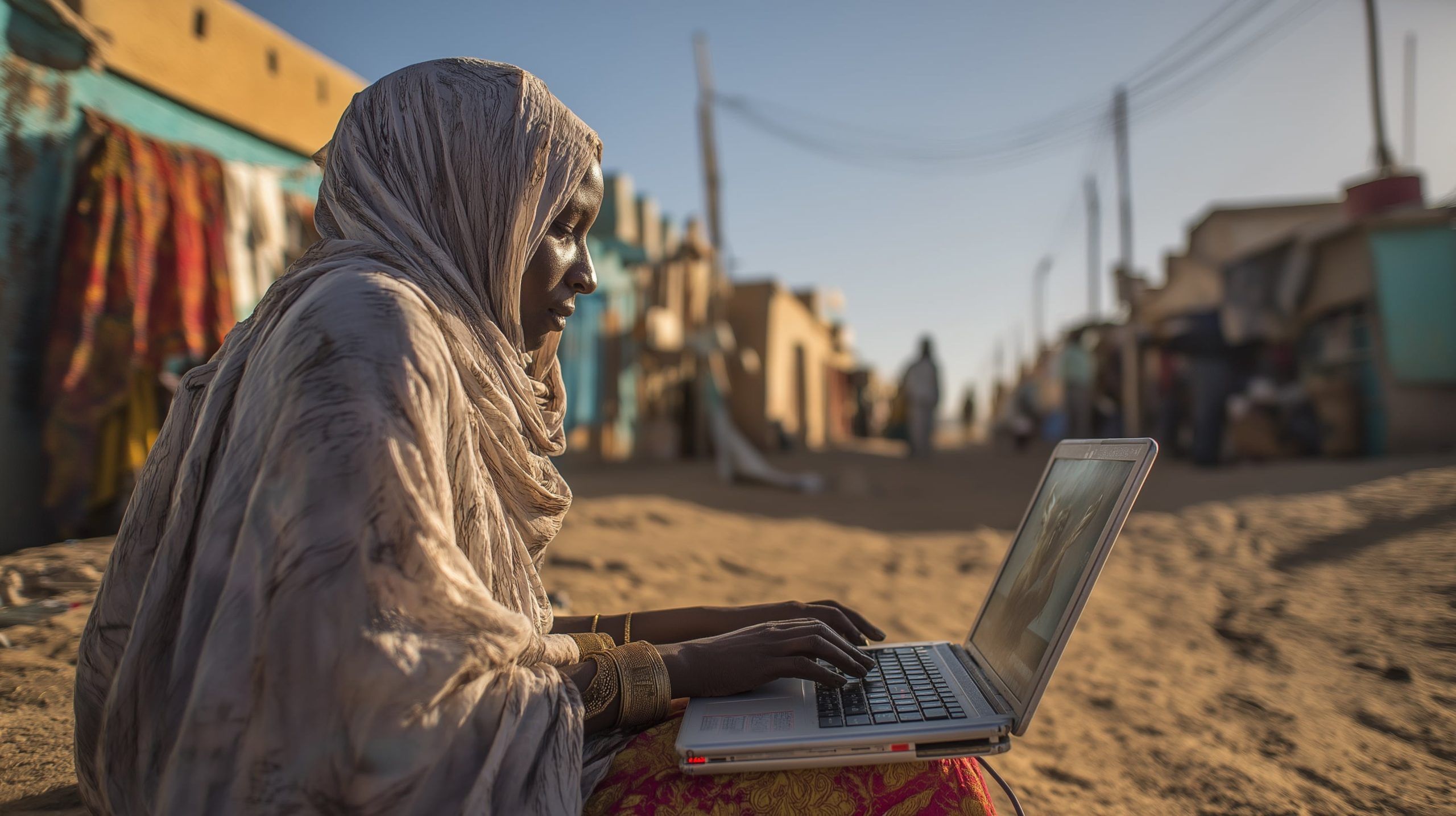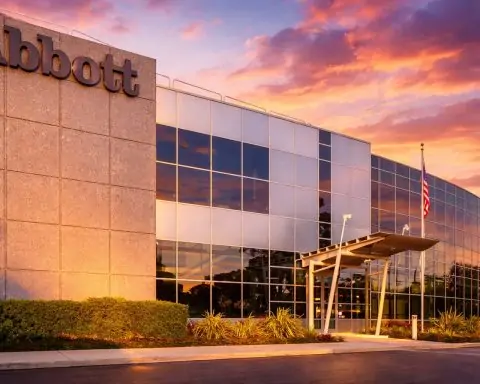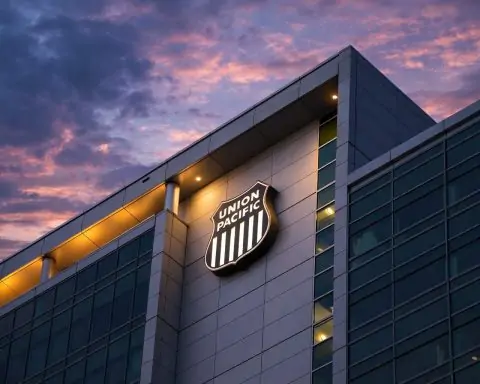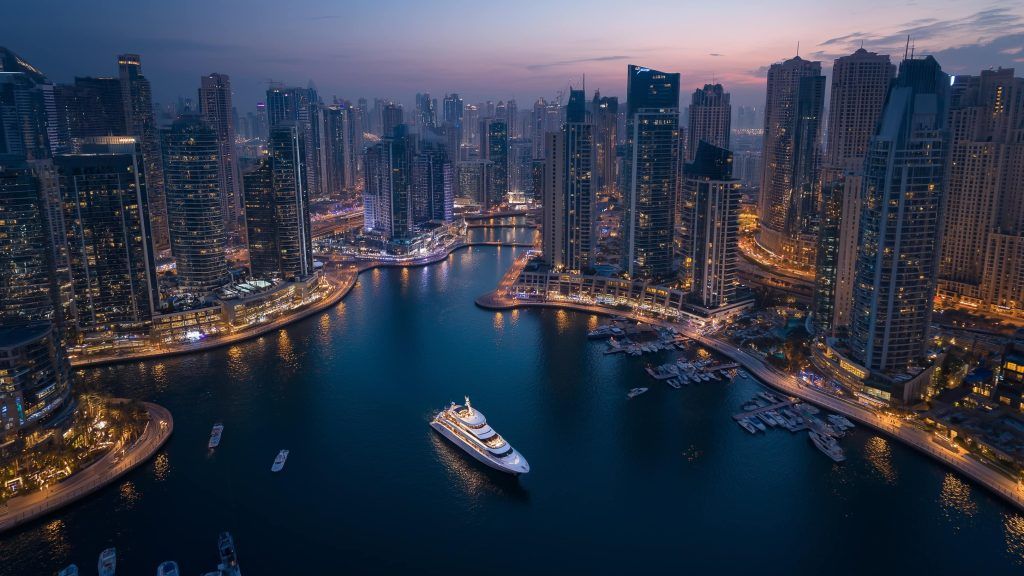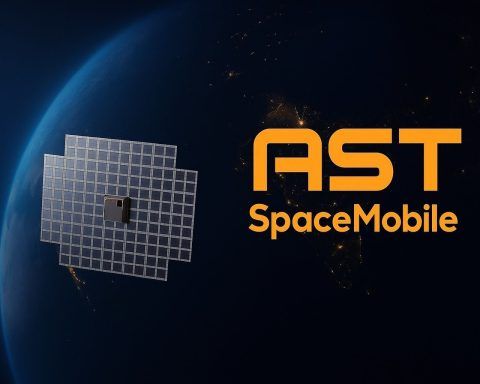- As of early 2025, about 1.96 million Mauritanians were internet users, roughly 37% of the population.
- Under the National Digital Transformation Agenda 2022–2025, Mauritania planned to add 4,000 km of fiber backbone by 2025, and by mid-2024 had deployed about 5,500 km with another 2,300 km planned.
- ACE, landing in Nouakchott since 2012, was the country’s sole international link until 2025, when Mauritania contracted with EllaLink in July 2025 to extend a transatlantic cable with a 500 km Nouadhibou branch, with service due by early 2027.
- May 2025 marked the launch of Mauritania’s first national Internet Exchange Point (IXP) and the Nouakchott Data Hub, a Tier III data center funded by a €15 million EIB loan.
- All three mobile operators launched 4G in 2021, and by 2024 around 74% of the population had access to at least one 4G signal while 5G remained virtually non-existent in 2025.
- Fixed-line internet remains extremely limited at about 1% of the population, with fixed broadband speeds averaging around 25 Mbps download and 14 Mbps upload.
- The market is led by Mauritel/Moov Mauritel with about 66% share, Mattel with about 20%, Chinguitel about 7%, and RIMATEL around 6%, forming an oligopoly.
- There were 6.14 million mobile connections in use in 2025, roughly 117% of the population, with about 86% of connections broadband-capable (3G/4G).
- Starlink was expected to roll out in Mauritania with regulatory approval sought in early 2025, and by mid-2025 Starlink had gone live in about 20 African countries, offering 50–150 Mbps and 20–40 ms latency, though hardware costs and monthly fees could be several hundred dollars and $50–$100 respectively.
- The government aims to double internet usage and expand the digital economy, with roughly €400 million allocated for infrastructure and initiatives and a target of about 70% internet penetration as capacity expands.
Overview of Internet Access in 2025
Mauritania has made notable strides in expanding internet access, but connectivity remains below global averages. As of early 2025, roughly 1.96 million Mauritanians were internet users, representing about 37% of the population [1]. (Other estimates put usage around 41–44%, depending on data sources [2] [3].) This marks significant growth – internet penetration has increased by roughly 17% since 2017 [4] – yet it still hovers only slightly above the African continental average (~39% in 2022) [5]. The vast majority of users come online via mobile phones, as fixed-line internet is extremely limited. Overall, mobile networks serve as the lifeline of Mauritania’s internet, while fixed broadband remains nascent. The government has recognized digital access as pivotal for development and is investing heavily to improve infrastructure and close the digital divide.
Infrastructure: Fiber Optics and Broadband Backbone
Fiber-optic infrastructure is expanding rapidly. Under the National Digital Transformation Agenda 2022–2025, Mauritania set out to add 4,000 km of fiber backbone by 2025 [6]. In fact, as of mid-2024 the country had already deployed about 5,500 km of fiber and announced plans for an additional 2,300 km to connect all regions (all wilayas and moughataas) via fiber optic cable [7] [8]. This nationwide fiber expansion aims to link even remote areas to high-speed backbones, improving both domestic connectivity and international access. Until recently, Mauritania’s global internet traffic relied on a single subsea cable – the Africa Coast to Europe (ACE) cable that lands in Nouakchott (operational since 2012) [9]. This single link has been a vulnerability, as breaks in the ACE cable have caused nationwide slowdowns or outages in the past [10]. To boost resilience, a second subsea cable is now in the works: in July 2025, the government contracted with EllaLink to extend its transatlantic cable to Mauritania [11]. A new 500 km branch will land in Nouadhibou (the country’s second-largest city), directly connecting Mauritania to Europe and Brazil; construction is underway with service expected by early 2027 [12]. Co-financed by the EU and EIB, this EllaLink extension will greatly increase international bandwidth and redundancy, reducing the country’s dependence on a single cable.
On land, the fiber backbone now links major cities and neighboring countries, with support from partners like the UAE, France, and the UN [13]. By strengthening both submarine and terrestrial fiber links, Mauritania hopes to improve network reliability and lower latency. In May 2025 the country also launched its first national Internet Exchange Point (IXP) and a Tier III data center in Nouakchott (the “Nouakchott Data Hub”) [14]. This facility, funded by a €15 million EIB loan, is jointly managed by the government and the telecom operators, and will localize more internet traffic and content. Such investments in domestic internet infrastructure (fiber backbone, data centers, IXPs) are laying the groundwork for faster and more resilient connectivity nationwide.
Mobile Broadband: 4G Coverage and the Absence of 5G
Because fixed lines are scarce, mobile broadband is the primary way Mauritanians get online. Mobile network coverage has improved, especially in cities. All three major operators launched 4G LTE services in 2021 (initially in urban areas) [15], ending a long wait for mobile broadband beyond 3G. By 2024, about 74% of the population had access to at least one 4G signal [16]. Nouakchott and other cities now enjoy 4G coverage, which has boosted download speeds and user experience in those areas. In contrast, many rural and remote communities still rely on 2G/3G networks or have no coverage at all. (Back in 2017, only 41% of the population had 3G coverage and 4G was nonexistent [17]. While coverage has grown since then, it remains uneven outside of cities.) The government’s ongoing fiber rollout is expected to help extend backhaul to rural cell towers, enabling broader 3G/4G coverage in underserved regions [18]. Still, challenges like vast distances, desert terrain, and sparse settlements mean mobile operators have little incentive to build out infrastructure in some areas without subsidies.
5G technology is not yet available in Mauritania. The telecom regulator has mentioned future plans to upgrade to 5G, but as of 2025 no spectrum has been allocated and no timeline announced [19]. Currently, less than 1% of people have any 5G signal available [20], likely only through small test networks or cross-border roaming. In short, 4G is now the standard for high-speed mobile internet in Mauritania’s cities, while 5G remains on the distant horizon. The focus for now is on fully rolling out 4G and improving basic coverage. According to the Internet Society, about 74% of people are covered by 4G, but the country has virtually 0% 5G coverage [21]. Improving last-mile connectivity in rural areas (via 3G/4G or other wireless solutions) is a priority to ensure the benefits of the internet reach beyond the urban population.
Fixed-Line Internet and Fiber-to-the-Home
Fixed broadband in Mauritania is extremely limited, almost negligible compared to mobile. Only about 1% of the population has a fixed internet subscription faster than 256 kbps (e.g. DSL, cable, or fiber) [22]. In absolute terms, this means just on the order of tens of thousands of fixed-line connections in the whole country. The incumbent Mauritel has offered ADSL and a few fiber-to-the-premises links in Nouakchott, primarily serving businesses, government, and a small number of wealthy households. In recent years, a new player RIMATEL S.A. (founded 2021) has entered the market to provide next-generation broadband via fixed wireless and fiber-to-the-home in the capital [23]. RIMATEL introduced unlimited high-speed data plans (branded “SAWI”) and aims to become a leading ISP [24]. However, its reach is still limited to parts of Nouakchott and perhaps other major towns. Overall, fiber-to-the-home (FTTH) connectivity is in its infancy – a few pilot projects and enterprise links exist, but mass deployment is yet to come.
Mauritania’s geography and income levels have made widespread fixed-line investment challenging. Instead, the strategy is to use the beefed-up fiber backbone as middle-mile infrastructure while relying on wireless (mobile or radio links) for the last mile. The government’s fiber expansion to all regions is expected to enable broadband access in every province, potentially via public Wi-Fi, local ISPs, or 4G LTE as backhaul. Officials have claimed that the 4,000 km national fiber network completed in 2021 will help cut internet costs by 50% on fixed broadband and 25% on mobile, by introducing more capacity and competition [25]. They also project that, as the backbone gets fully utilized, internet penetration could rise to 70% of the population [26]. While this target is optimistic, it underlines the hope that better infrastructure will spur affordable fixed broadband offerings.
At present, fixed broadband quality ranks low by global standards. The average fixed network download speed is about 25 Mbps (with ~14 Mbps upload), which placed Mauritania around 130th in the world as of mid-2025 [27]. These speeds, while a marked improvement from a few years ago, are constrained by the limited fiber access networks. As fiber-to-the-home and modern cable remain scarce, most “fixed” connections may actually be fixed-wireless or older DSL lines. Going forward, the combination of new fiber backbone investments and entrants like RIMATEL could gradually bring high-speed home broadband to more customers. But for now, Mauritania’s internet landscape is dominated by mobile connectivity, with fixed-line internet available only to a privileged few.
Major Internet Service Providers (ISPs)
Mauritania’s telecom market is served by a handful of operators. The three main ISPs (which also operate the mobile networks) are:
- Mauritel (Mauritanian Telecommunications Company) – the incumbent operator, controlling about 66% of the internet market share [28]. Mauritel, rebranded as Moov Mauritel, is part of Maroc Telecom’s network (majority-owned by Etisalat Group) [29]. It inherited the legacy infrastructure (telephone lines, the ACE cable landing, etc.) and remains the dominant provider for both fixed and mobile services. Mauritel’s large market share reflects its extensive coverage and the fact that many internet users rely on its mobile data network by default.
- Mattel – the second-largest provider with roughly 20% market share [30]. Mattel was historically a joint venture with Tunisie Telecom; it has since been acquired by the Telecel Group [31]. Mattel operates as a mobile network and ISP, focusing on mobile broadband and some wireless home internet offerings. It competes primarily in urban markets.
- Chinguitel – a smaller operator holding about 7% of the market [32]. Chinguitel is part of the Sudatel (Sudan Telecom) group and entered the Mauritanian market in the mid-2000s. It offers mobile services and some fixed wireless broadband. Chinguitel’s customer base is limited, and it has struggled to keep up with the coverage and quality of the larger two operators.
In addition to these, RIMATEL S.A. has about 6% share [33], reflecting its growing presence as a dedicated ISP (focusing on fixed wireless and fiber broadband rather than mass-market mobile). There is also mention of Sahel Telecom (with a negligible share) [34] – this might be a specialized provider or simply a minor licensee with minimal impact.
Notably, the market is not very competitive from a consumer perspective. The Internet Society’s assessment rates Mauritania’s market competitiveness as “Very Poor.” [35] Prices and offerings tend to be similar across the three mobile operators, and there has been little pressure to lower costs or innovate beyond what the regulator mandates. The government hopes that new infrastructure (e.g. the national fiber backbone) will “encourage new market entry” [36], possibly by enabling smaller ISPs like RIMATEL or others to serve customers over an open-access network. For now, however, Mauritel, Mattel, and Chinguitel form an oligopoly, with Mauritel clearly in the lead. Each of these provides 2G/3G/4G mobile data plans, and Mauritel also provides most of the few fixed ADSL/fiber lines in the country. Consumers often carry multiple SIM cards – indeed mobile penetration is over 110% if counting SIMs [37] – to take advantage of different coverage and promotions, especially among urban users who might have one SIM from Mauritel for coverage and another from Mattel for cheaper data, for example.
Urban vs. Rural Connectivity Divide
Like many countries, Mauritania faces a significant urban-rural digital divide. Most internet infrastructure and usage is concentrated in cities, especially the capital Nouakchott (home to roughly one-third of the population) [38] and the economic center Nouadhibou. These urban areas enjoy far better connectivity: all three operators’ 4G networks cover the main cities, and there are options for higher-speed services like fiber or fixed wireless for businesses. In Nouakchott you can even get fiber-to-premises with plans up to 100–200 Mbps (though at very high cost and limited availability). As a result, internet quality in urban Mauritania is markedly superior to that in rural localities. Urban users generally experience faster speeds and more reliable connections, and a greater percentage of city dwellers are online. For example, multiple telecom towers and microwave links serve the capital, and an Internet Exchange Point in Nouakchott now keeps local traffic (e.g. government and bank services) within the city for lower latency.
By contrast, rural and remote regions lag in both access and quality. As of a few years ago, less than half of the population outside cities had any 3G coverage [39], and many remote villages only had basic 2G voice/SMS service or no signal at all. Even where 3G/4G coverage exists in smaller towns, the networks can be slow or overloaded, delivering only a few Mbps at best. Many rural communities in the vast desert interior remain effectively offline, hampered by the high cost of infrastructure and the low population density. It’s telling that ~59% of Mauritanians live in urban areas, yet the bulk of internet users come from this group [40]; the rural 41% of the population accounts for a disproportionately small share of internet usage. Digital literacy and electricity access also tend to be lower in rural areas, further limiting internet uptake there.
The government is actively trying to address this divide. The fiber backbone project explicitly aims to connect all regions and their administrative centers via high-capacity links [41]. By bringing fiber to each wilaya (region) and moughataa (district), the authorities hope mobile operators can then extend coverage more feasibly (since they can connect new cell towers to the nearest fiber point). Additionally, some universal access efforts have seen solar-powered mobile towers or satellite terminals deployed in remote settlements (especially to serve schools or clinics). As an example of progress, the share of population with at least some mobile internet (3G/4G) coverage has been climbing; although it was only 41% with 3G in 2017, by 2024 combined mobile internet coverage reached roughly 74% with 4G available in populated areas [42]. Still, a noticeable quality gap persists – a YouTube stream or video call that is routine in Nouakchott might be impossible in a village deep in the Sahara. Until connectivity, power supply, and skills improve in rural Mauritania, urban users will reap most of the internet’s benefits. Bridging this gap is a core part of Mauritania’s digital strategy, which considers universal access as critical for inclusive development.
Pricing and Affordability of Internet
Internet access in Mauritania has historically been expensive, but recent improvements in infrastructure are gradually bringing prices down. For mobile data, the country has some of the higher prices in North Africa. The average cost of 1 GB of mobile data in Mauritania was about $1.32 in 2023 [43] – notably the highest in the North African region (where the average is $0.86/GB), though still below the global average of ~$2.60/GB [44]. A few years ago, costs were even higher: estimates show 1 GB was around $3.90 in earlier years, consuming nearly 20% of an average monthly income by one calculation [45]. Since then, data tariffs have dropped significantly (one analysis noted a 16% price drop in 2023 alone). Several factors contribute to the high costs: limited competition, heavy reliance on a single international cable (which kept bandwidth scarce), and a low user base over which to spread network costs.
There are signs of improvement. The completion of new fiber routes and increased international capacity have enabled operators to offer larger data bundles for less. According to the ITU, a typical monthly mobile plan including 2 GB of data (plus some calls and texts) cost about $6.00 in 2024, which was 44% cheaper than the year prior [46]. In terms of affordability, that plan equated to roughly 3.4% of average income per capita [47]. The Internet Society’s latest figures are even more optimistic: they suggest that a basic “low-consumption” mobile broadband package (defined as at least 1.5 GB at 3G speeds) now costs under 1% of GNI per capita [48] – well within the UN affordability target of 2% income. In short, by global benchmarks Mauritania has crossed into the realm of “affordable internet” on paper. However, these metrics can mask realities on the ground. GNI per capita is skewed by a small wealthy segment; for the average Mauritanian household, spending $5–$10 a month on data can still be a burden when incomes are low and other services (like electricity or water) also incur costs.
For fixed broadband and higher-end services, the price barrier is even greater. Since fixed-line internet is not widespread, it targets enterprise and affluent users at high tariffs. For instance, an unlimited home fiber package (where available) can cost on the order of $100–150 per month (anecdotal reports cite ~$140/month for 200 Mbps in Nouakchott) [49]. Such amounts are out of reach for the majority of citizens. Even DSL plans often cost $30–$50 monthly for a few Mbps speeds, which is why relatively few households subscribe. The government hopes that boosting backbone capacity and introducing more competition will drive these costs down. The Ministry of Digital Transformation claimed that the new national fiber network would “reduce the cost of internet services by 50% for fixed lines and 25% for mobile” over time [50]. If realized, those reductions could make a basic fiber connection and mobile data much more accessible.
It’s also worth noting that perceived value and quality affect affordability. A rural user might find even a cheap data bundle not “worth it” if the network is too slow to be useful. Conversely, urban users are sometimes willing to pay a premium for faster 4G or home broadband because it enables business, education, and entertainment. Overall, while Mauritania’s internet pricing remains high relative to income, the trend is moving in the right direction. Mobile data is gradually getting cheaper (and per-GB prices should continue to fall as 4G usage grows), and the government’s interventions – such as keeping the IXP local to reduce transit costs, or leveraging the new submarine cable – aim to make internet access more affordable and abundant. Continued regulatory pressure to improve market competition will also be critical so that cost savings are passed on to consumers.
User Experience and Digital Literacy
The typical user experience of the internet in Mauritania varies greatly depending on location and socio-economic status. In the capital, an internet user with a modern smartphone and 4G service can stream videos, use social media, and make video calls – albeit often with moderate video quality due to network congestion. In Speedtest rankings, Mauritania’s mobile internet speeds averaged around 20 Mbps download in 2023 [51]. This is usable for most applications, but not particularly fast (for context, 20 Mbps is about one-third of the global average mobile speed). Users in Nouakchott have reported that during peak hours, networks slow down; and outside major towns, speeds drop significantly. On the fixed broadband side, the few with fiber or ADSL connections might enjoy anything from 5 Mbps up to 50+ Mbps, but inconsistent service quality is a common complaint. Power outages can also disrupt internet usage, as backup power for telecom towers or home routers isn’t always available. The reliability of Mauritania’s internet has been steadily improving thanks to network upgrades, yet it still suffers occasional setbacks – for example, a cut to the lone ACE submarine cable in past years caused nationwide disruptions, emphasizing the need for backup links [52].
From a user content and services perspective, Mauritanians primarily use the internet for communication and social networking. WhatsApp, Facebook, and YouTube are among the most popular platforms. Interestingly, e-commerce in Mauritania largely operates through informal channels like WhatsApp rather than dedicated websites [53]. Many local businesses simply post product pictures and details in WhatsApp groups or Facebook pages, and customers order via messaging. This approach has been successful given the context – it sidesteps the need for high digital literacy or trust in online payment platforms (transactions often conclude with cash on delivery or simple bank app transfers like Bankily or Masrivi in local banks) [54]. Such usage patterns indicate that while internet access is growing, digital literacy and trust in online systems are still developing. People feel more comfortable using familiar chat apps for business rather than navigating complex e-commerce sites.
The government and various NGOs are pushing to improve digital literacy and skills. As part of the national digital agenda, education curricula are being updated to include ICT skills, and programs have been launched to train youth and civil servants in digital tools [55]. The country’s youthful demographics (median age ~17) mean there’s potential for a generation of “digital natives” if connectivity and training reach schools [56]. Currently, however, many Mauritanians lack advanced computer skills beyond basic smartphone usage. Literacy in general (reading/writing in Arabic or French) is a barrier for some adults, which in turn limits full use of the text-heavy web. Multilingual internet content is also an issue – most local content is in French (or Arabic on social media), so non-Francophone, non-Arabic speakers in some communities may find little relevant content online.
From a user experience standpoint, affordability and awareness also shape usage. Even when mobile internet is available, some people only turn on data for essential tasks due to cost concerns, or they use it sparingly (e.g. buying a small data package only on weekends) [57]. This “metered” usage means the internet hasn’t yet become an always-on utility for everyone, but rather something to be conserved, especially among lower-income users. Despite these challenges, there is a clear sense of progress. Citizens are increasingly using online government services, digital payments are slowly growing, and social media has become a key forum for expression and news. The user experience in 2025 is markedly better than in 2015, thanks to broader 4G coverage and slightly faster speeds. And with forthcoming improvements (new cables, more fiber, potential satellites), Mauritanians can expect further enhancements in speed and reliability. Ensuring that users have the skills and knowledge to take full advantage of the internet is now a priority. The government’s agenda explicitly highlights building “digital awareness among citizens and businesses” and fostering trust in online systems [58] – for example, by strengthening cybersecurity and data protection – so that more people feel safe conducting activities online. In summary, the average user in Mauritania is gaining more capability to participate in the digital world, but the country is still in the early stages of widespread digital literacy and advanced usage.
Government Policies and Regulatory Frameworks
The Mauritanian government has placed connectivity at the center of its development plans, backing this commitment with policies, programs, and regulatory changes. In 2021, a dedicated Ministry of Digital Transformation, Innovation, and Modernization of Administration was created to coordinate the country’s digital initiatives [59]. Soon after, the National Digital Transformation Agenda (2022–2025) was launched, outlining ambitious targets: to double internet usage by 2025, triple the number of digital-economy jobs, and establish Mauritania as the leading digital nation in the Sahel [60]. To achieve this, the agenda is built on four strategic pillars, the first of which is Enhancing Digital Infrastructure. This pillar encompasses the aggressive expansion of fiber optic networks, improvements to international connectivity via new cables, and boosting mobile network coverage and quality [61]. The agenda earmarked about €400 million for implementation, funded through public-private partnerships and support from international development partners [62].
One concrete outcome of these policies was the 4,000 km national fiber backbone completed in 2021 [63], an infrastructure project championed by the government. The state also facilitated partnerships (e.g. with the EU and EIB for the EllaLink cable and data center, and with foreign governments for training programs) [64] [65]. On the regulatory front, Mauritania’s telecom regulator (previously Autorité de Régulation) has overseen the introduction of new technologies (such as licensing 4G in 2020–2021) and is responsible for managing spectrum and ensuring service quality. Telecom liberalization has partially occurred – the presence of three mobile operators indicates competition, though all are relatively well-established now. The regulator has expressed interest in attracting a new entrant or MVNO to enhance competition, particularly if prices don’t fall to affordable levels. Additionally, the government has talked up the possibility of opening the market for 5G or advanced services in the future, but as noted, no concrete steps have been taken yet towards 5G [66].
Mauritania also set up initiatives like a Universal Access Fund some years ago, aimed at financing telecommunications projects in underserved areas. The effectiveness of such funds has been mixed, but they have contributed to installing telecenters and connectivity in a few remote localities. On the governance side, recent laws and institutions have been put in place: for example, a High Council for Digital Development was planned, and agencies for cybersecurity and data protection are being developed [67]. Cybersecurity is a growing concern; Mauritania scored only 19 out of 100 on the Global Cybersecurity Index in 2023 [68], prompting efforts to beef up legal frameworks against cybercrime.
It’s worth noting that government policy has a dual nature in Mauritania: promoting connectivity and also controlling it when deemed necessary. Authorities have occasionally ordered internet shutdowns in times of crisis or unrest. For instance, in March 2023, after a high-profile prison escape, the government cut off mobile internet nationwide for over a week as a security measure [69] [70]. In prior years, internet blackouts were imposed during sensitive periods like post-election protests or even during school exam sessions (to curb cheating) [71]. These actions, while not frequent, highlight that the regulatory framework allows for significant government intervention in the network. Such shutdowns have been criticized by digital rights groups for harming the economy and citizens’ rights, leading to calls for more restraint [72] [73]. The government in 2021–2022 showed some improvement by avoiding exam-related shutdowns [74], indicating a possible policy shift toward keeping the internet on. Additionally, a controversial law passed in 2021 to “protect national symbols” raised concerns it could be used to police online speech on social media [75], demonstrating the tension between expanding internet use and regulating content.
Overall, the regulatory environment in Mauritania is evolving, with a clear top-down drive to build digital infrastructure and services. Key policy highlights include the push for e-government (digitalizing public services and records), support for tech startups and innovation hubs under the agenda’s fourth pillar [76], and encouraging digital financial services (the rise of mobile money apps is partly due to supportive regulations). The government frequently reiterates that ICT development is crucial for diversifying the economy (which has traditionally relied on mining and agriculture). By improving connectivity and adopting pro-investment regulations, Mauritania is trying to attract international tech and telecom investments. For example, the sale of Mattel to Telecel Group was facilitated by the regulatory approval as part of sector restructuring. As we approach the end of the 2022–2025 strategy period, Mauritania is expected to draft a new plan or extend its agenda, doubling down on unfinished goals like increasing internet penetration and usage in all segments of society. In summary, government policy is largely proactive and supportive of expanding internet access, though balancing affordability, competition, and freedom online remain ongoing challenges for regulators.
Satellite Internet and Connectivity in Remote Areas
Given Mauritania’s vast deserts and low population density in many areas, satellite internet has long been an important piece of the connectivity puzzle. Historically, VSAT (Very Small Aperture Terminal) satellite links have been used by businesses (mining companies, banks), international organizations, and government offices to connect locations where terrestrial networks don’t reach. As one industry source notes, “the nature of the country, with its poor telecommunications infrastructure, will mean that VSAT is set to play a key part in its ICT development.” [77] In other words, satellites can bypass the lack of fiber or microwave links to remote regions. Many of Mauritania’s interior towns and facilities (like remote oil exploration sites or border posts) have relied on C-band or Ku-band satellite broadband for basic internet and voice service. The downside has been very high cost and latency – traditional geostationary satellite plans are expensive and have latency ~600 ms, making real-time applications difficult. Thus, satellite was often a last-resort solution used by those who absolutely needed connectivity off the grid.
Now, with the advent of low-Earth orbit (LEO) satellite constellations, there is excitement about new possibilities for remote connectivity. Notably, Starlink, SpaceX’s satellite internet service, has been expanding across Africa. Mauritania is slated to receive Starlink service by Q4 2024 [78], according to TeleGeography’s GlobalComms database and Starlink’s own projections. By mid-2025, Starlink had already gone live in about 20 African countries, and Mauritania was in the next batch of launches [79]. As of early 2025, Starlink was pending regulatory approval in Mauritania, but no major roadblocks have been reported, so it’s expected to roll out. This service could be transformative for sparsely populated areas – a single Starlink kit (dish) can provide high-speed internet (50–150 Mbps) to a village or a nomadic community with latency of ~20–40 ms, something previously unimaginable outside the cities. However, cost will be a factor: Starlink’s hardware runs a few hundred dollars, and monthly subscriptions in Africa are around $50–$100, which is steep for the average Mauritanian. It might initially see uptake with NGOs, businesses, or wealthier individuals in remote areas that currently have no viable broadband. Over time, as costs potentially decrease, Starlink or similar LEO services (such as OneWeb, which is also expanding coverage via distribution partners) could play a big role in connecting schools, health centers, and homes in the Sahara and Sahel regions of Mauritania.
The government appears cautiously optimistic about satellite solutions. While no specific national satellite program exists, officials have included satellite connectivity in their universal access considerations. For example, if laying fiber or microwave to a village is cost-prohibitive, a satellite link might be subsidized instead. In coastal areas and for offshore connectivity (Mauritania has offshore oil and gas operations), satellites are already in use and will continue to be important. OneWeb, a LEO constellation partly aimed at enterprise and government connectivity, has coverage over Mauritania’s latitude and could partner with local telecom companies to extend backhaul to rural cell towers via satellite. Additionally, older services like Thuraya and Inmarsat are used for basic telephony and internet by nomads or travelers in the deep desert, albeit at very slow speeds (e.g. dial-up speeds for data).
In summary, satellite internet is emerging as a key complement to ground infrastructure for Mauritania. The timing is fortunate: just as the country connects its first national fiber routes, new satellite options are coming online to fill the remaining gaps. Looking ahead, we can envision a hybrid connectivity model – fiber and microwave links bringing high capacity to each regional hub, and satellites bridging the last stretch to truly remote endpoints like communities in the Adrar plateau or the far eastern border. Importantly, once Starlink is operational, it could also serve as a backup for critical connectivity. For instance, if the ACE cable breaks again, banks or ISPs in Nouakchott might use Starlink as a temporary route to global internet, mitigating outages. The presence of multiple connectivity paths (fiber, microwave, LEO satellite, GEO satellite) will greatly improve the resilience of Mauritania’s internet against disruptions. It is indeed part of what some dub an “Internet Revolution” – where even a tent in the desert could theoretically stream a video class from the capital via satellite.
Internet Penetration and Usage Trends
Internet penetration in Mauritania has grown steadily and is poised to accelerate as new initiatives bear fruit. To recap the numbers: about 37.4% of the population were internet users at the start of 2025 [80], up from roughly 25% in 2019 and just 10% in 2010. This corresponds to ~1.96 million users out of a population of 5.24 million [81] [82]. Interestingly, there was a report of 44% penetration in early 2024 (2.19 million users) [83], which was later revised down – likely due to a change in data sources or definitions. In any case, Mauritania’s internet user base is now around the 2 million mark. The government’s target of 70% penetration in the near future [84] is ambitious, but not impossible if inexpensive smartphone access reaches the majority of adults. Notably, mobile phone ownership is very high: there are 6.14 million mobile connections in use (117% of the population) as of 2025 [85], meaning many people have more than one SIM. This indicates the potential pool of internet users could expand quickly if all those mobile subscribers transition to using data services. Currently, about 86% of mobile connections are broadband-capable (3G/4G) [86], although not all are actually used for internet access (some people keep a second SIM just for calls/SMS or have a phone but no data plan) [87].
In terms of how Mauritanians use the internet, social media and messaging are dominant. There were 1.57 million social media user accounts in January 2025, about 30% of the population [88]. Facebook is widely used (including Facebook Free Basics in some cases), WhatsApp has near-universal adoption among those online, and YouTube is popular especially with youth for music and entertainment. Twitter/X and Instagram have smaller but growing user bases, often among educated urbanites. E-government services (like applying for documents or accessing public information) are being introduced, but their usage is not yet widespread. Likewise, e-commerce is still nascent – rather than Amazon-style shopping, it’s more social-media-commerce as noted.
One positive trend is the rising use of digital financial services: mobile banking and mobile money apps have gained tens of thousands of users [89]. Platforms like Bankily and Masrivi allow for peer-to-peer transfers and bill payments, and they’ve integrated with international money transfer services [90]. This shows that once people become comfortable with an app (in this case for banking), they can fairly quickly incorporate it into daily life, hinting at latent demand for more online services if trust and utility are established.
Who is using the internet? The demographic skew is towards younger people and those in cities. The median age in Mauritania is very young (17.4 years) [91], so youths and students form a large chunk of new internet users – especially as smartphones become more affordable. There is likely a gender gap as well: although official stats say the population is 50.9% female [92], men might have higher internet access rates due to cultural and economic factors (this is a common pattern in some Sahel countries). However, initiatives to get more women online (for example, training women entrepreneurs in digital marketing) are underway. Another notable user group is the Mauritanian diaspora and expats – while not counted in local penetration, they leverage the internet to communicate back home, and their needs (e.g. for reliable video calls) have driven some of the demand for better connectivity.
Finally, it’s important to recognize that internet growth has ripple effects on society and the economy. Even at ~37-40% penetration, the internet is reshaping how Mauritanians access information (Facebook has become a key news source), how they socialize, and how businesses operate. As connectivity improves, we can expect increased uptake of things like e-learning (which got a boost during COVID), telehealth services for remote communities, and perhaps more participation in the global digital economy (such as freelancing or IT outsourcing). The government’s digital strategy explicitly ties higher connectivity to job creation and innovation – for example, by fostering startups, tech hubs, and digital entrepreneurship [93]. While those are still early-stage, a few tech startups have emerged in Nouakchott in fintech and e-commerce, showing promise.
In summary, Mauritania’s internet penetration is on a steady upward trajectory, with usage around the 40% mark and likely to exceed 50% in the next few years if current trends hold. The combination of strategic infrastructure investments, improving affordability, and the advent of new technologies (like satellite and 4G expansion) could indeed spark an “internet revolution” in the country. The key will be ensuring that this growth is inclusive – reaching rural areas, women, and marginalized groups – and that users are equipped with the skills and safeguards to use the internet productively and safely. The year 2025 finds Mauritania at a digital inflection point: connectivity has never been better than it is now, yet there is much room to grow in both access and digital empowerment.
Sources:
- Internet Society – Pulse: Mauritania Country Report [94] [95] [96]
- DataReportal – Digital 2025 Mauritania (We Are Social/Hootsuite) [97] [98]
- DataReportal – Digital 2024 Mauritania [99]
- World Bank/Trade.gov – Mauritania eCommerce Guide (2023) [100] [101]
- Data Center Dynamics – “Ellalink to expand subsea cable to Mauritania” [102] [103]
- We Are Tech Africa – “Mauritania announces 2,300 km fiber expansion” [104] [105]
- WorldData.info – Telecommunication in Mauritania [106] [107]
- TeleGeography – “Starlink Expanding in Africa” [108]
- Reddit (user report) – on local internet pricing [109]
- SMEX – “Mauritania: Drawbacks of disrupting mobile internet…” [110] [111]
- BusinessCom Networks – “Satellite Internet in Mauritania” [112]
- Internet Society – Pulse data (4G/5G coverage, affordability) [113] [114]
- Trade4Dev News – Mauritania Digital Transformation Agenda summary [115] [116]
References
1. datareportal.com, 2. www.trade.gov, 3. pulse.internetsociety.org, 4. www.trade.gov, 5. pulse.internetsociety.org, 6. dig.watch, 7. www.wearetech.africa, 8. www.wearetech.africa, 9. www.datacenterdynamics.com, 10. www.datacenterdynamics.com, 11. www.datacenterdynamics.com, 12. www.datacenterdynamics.com, 13. www.wearetech.africa, 14. www.datacenterdynamics.com, 15. www.trade.gov, 16. pulse.internetsociety.org, 17. www.trade.gov, 18. www.wearetech.africa, 19. www.trade.gov, 20. pulse.internetsociety.org, 21. pulse.internetsociety.org, 22. www.worlddata.info, 23. btw.media, 24. btw.media, 25. www.trade.gov, 26. www.trade.gov, 27. www.worlddata.info, 28. pulse.internetsociety.org, 29. www.datacenterdynamics.com, 30. pulse.internetsociety.org, 31. www.datacenterdynamics.com, 32. pulse.internetsociety.org, 33. pulse.internetsociety.org, 34. pulse.internetsociety.org, 35. pulse.internetsociety.org, 36. www.trade.gov, 37. www.trade.gov, 38. www.bcsatellite.net, 39. www.trade.gov, 40. datareportal.com, 41. www.wearetech.africa, 42. pulse.internetsociety.org, 43. bestbroadbanddeals.co.uk, 44. bestbroadbanddeals.co.uk, 45. watra.org, 46. www.worlddata.info, 47. www.worlddata.info, 48. pulse.internetsociety.org, 49. www.reddit.com, 50. www.trade.gov, 51. pulse.internetsociety.org, 52. www.datacenterdynamics.com, 53. www.trade.gov, 54. www.trade.gov, 55. dig.watch, 56. www.bcsatellite.net, 57. www.reddit.com, 58. dig.watch, 59. www.wearetech.africa, 60. dig.watch, 61. dig.watch, 62. dig.watch, 63. www.trade.gov, 64. www.datacenterdynamics.com, 65. www.wearetech.africa, 66. www.trade.gov, 67. dig.watch, 68. pulse.internetsociety.org, 69. smex.org, 70. smex.org, 71. smex.org, 72. smex.org, 73. smex.org, 74. smex.org, 75. smex.org, 76. dig.watch, 77. www.bcsatellite.net, 78. blog.telegeography.com, 79. blog.telegeography.com, 80. datareportal.com, 81. datareportal.com, 82. datareportal.com, 83. datareportal.com, 84. www.trade.gov, 85. datareportal.com, 86. datareportal.com, 87. datareportal.com, 88. datareportal.com, 89. www.trade.gov, 90. www.trade.gov, 91. datareportal.com, 92. datareportal.com, 93. dig.watch, 94. pulse.internetsociety.org, 95. pulse.internetsociety.org, 96. pulse.internetsociety.org, 97. datareportal.com, 98. datareportal.com, 99. www.trade.gov, 100. www.trade.gov, 101. www.trade.gov, 102. www.datacenterdynamics.com, 103. www.datacenterdynamics.com, 104. www.wearetech.africa, 105. www.wearetech.africa, 106. www.worlddata.info, 107. www.worlddata.info, 108. blog.telegeography.com, 109. www.reddit.com, 110. smex.org, 111. smex.org, 112. www.bcsatellite.net, 113. pulse.internetsociety.org, 114. pulse.internetsociety.org, 115. dig.watch, 116. dig.watch
